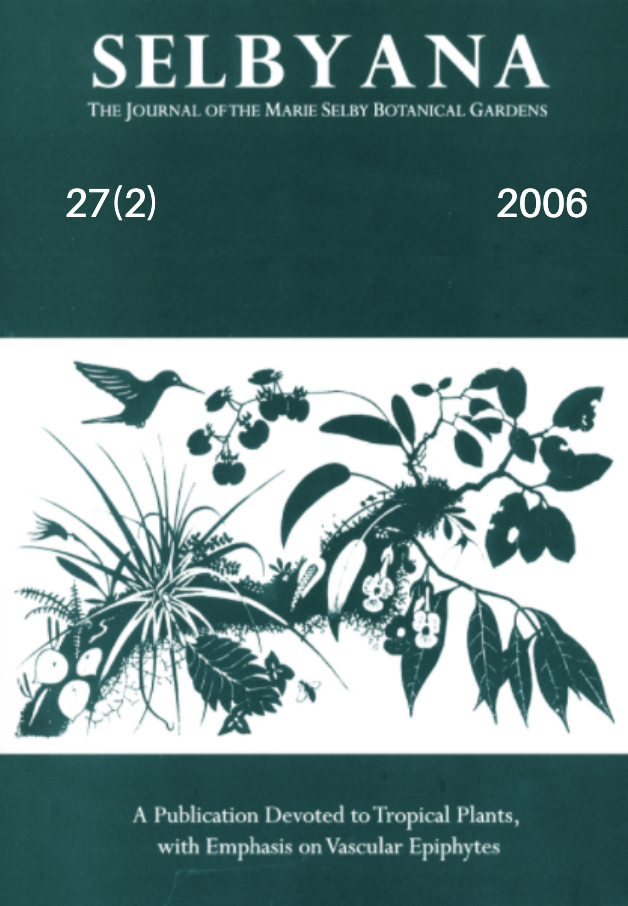Abstract
Flowers of Oncidium sphacelatum and Trichocentrum oerstedii were observed during several days at two sites in the Soconusco region of Chiapas, Mexico, to obtain details of seed set and insect visitation and to capture and identify potential pollinators. Fragrance samples from flowers of both orchids were taken for chemical analysis. No insect activity was observed for T. oerstedii, and no seed capsules had been produced. The bee, Centris (Hemisiella) trigonoides, although the most consistent visitor to the flowers of O. sphacelatum, did not participate in pollination. Single Centris (Paracentris) mexicana bees visited a few flowers once a day, and the authors trapped one bee with an O. sphacelatum pollinia present on the dorsal surface of the thorax. This orchid species presented a single seed capsule at the end of the flowering period. Different pollination strategies proposed for the two genera in Oncidiinae are discussed. Analysis of hexane extracts of flowers revealed that the dominant component of both species was a mixture of unsaturated and saturated hydrocarbons (C25-C31) as wax constituents. Although the fragrance of O. sphacelatum was characterized by zingerone, and the distinguishing component of the fragrance of T. oerstedii was syringaldehyde, both species produced relatively little scent. The timing of peak scent production was variable and did not necessarily coincide with insect visitation, suggesting that fragrance is not an important factor in the process of pollination.
Open Access and Copyright Notice
Selbyana is committed to real and immediate open access for academic work. All of Selbyana's articles and reviews are free to access immediately upon publication. There are no author charges (APCs) prior to publication, and no charges for readers to download articles and reviews for their own scholarly use. To facilitate this, Selbyana depends on the financial backing of the Marie Selby Botanical Gardens, the hard work and dedication of its editorial team and advisory board, and the continuing support of its network of peer reviewers and partner institutions.
Authors are free to choose which open license they would like to use for their work. Our default license is the Creative Commons Attribution-NonCommercial 4.0 (CC BY-NC 4.0). While Selbyana’s articles can be copied by anyone for noncommercial purposes if proper credit is given, all materials are published under an open-access license with authors retaining full and permanent ownership of their work. The author grants Selbyana a perpetual, non-exclusive right to publish the work and to include it in other aggregations and indexes to achieve broader impact and visibility.
Authors are responsible for and required to ascertain that they are in possession of image rights for any and all photographs, illustrations, and figures included in their work or to obtain publication or reproduction rights from the rights holders. Contents of the journal will be registered with the Directory of Open Access Journals and similar repositories. Authors are encouraged to store their work elsewhere, for instance in institutional repositories or personal websites, including commercial sites such as academia.edu, to increase circulation (see The Effects of Open Access).
